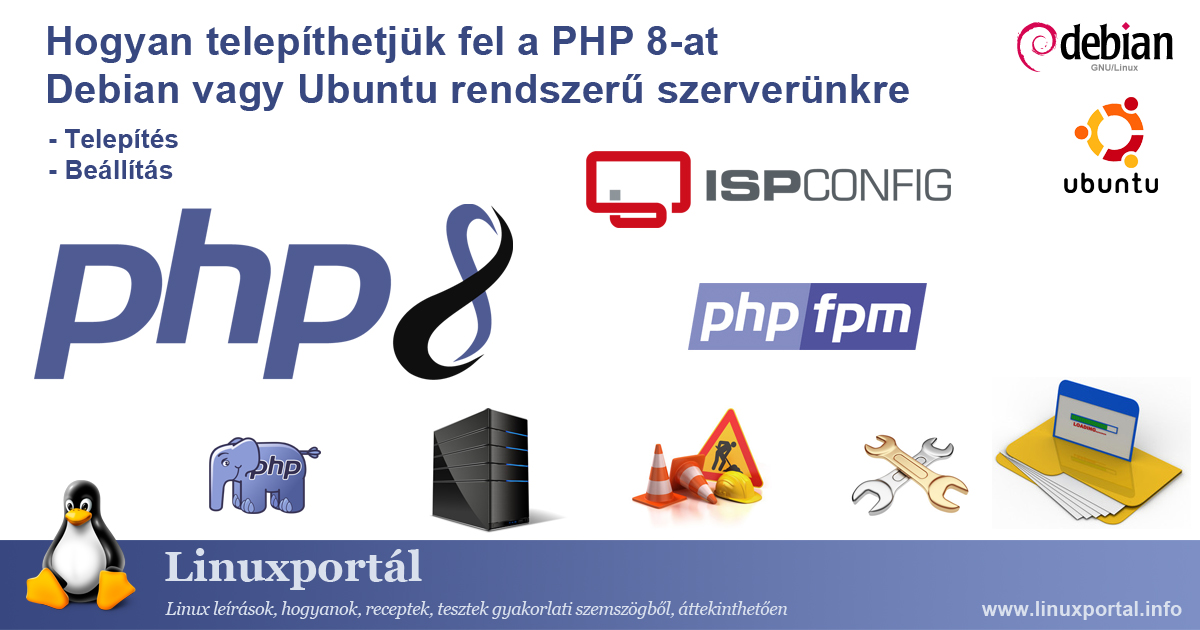LAMP
A collection of tutorials on LAMP (Linux Apache MySQL and PHP) systems.
How to enable the HTTP/2 protocol on our Apache based web server
The HTTP/2 or HTTP2.0 protocol enables faster web services with less data traffic. Although the protocol created in 2015 has been widespread for quite a few years, it is not turned on by default in the majority of web servers due to compatibility reasons. Among other things, it does not support the outdated mod_php Apache module, which in turn still operates many old websites, so enabling and enabling it is left to system administrators. In this short description, we will see how we can enable the use of the HTTP/2 protocol on Apache web servers that still use the old HTTP/1.1 protocol.
Debian 11 (Bullseye) LAMP server v1.0 installation
With the help of LAMP systems, we can run dynamic websites on our server or even on our home computer. In this description, we will create a LAMP server on the Debian 11 (Bullseye) operating system, on which the following components will be installed: Apache 2.4.54, MariaDB 10.5.15, PHP 7.4 and phpMyAdmin 5.0.4, UFW firewall.
How to install PHP 8 on your Debian or Ubuntu server
PHP is one of the most common server-side scripting languages for building dynamic web pages, making it an essential part of our web server. The latest major version of this, PHP 2020, was released on November 26, 8. In this tutorial, we will look at how to install PHP 8 on an Ubuntu 20.04 (Focal Fossa) LAMP server and a Debian 10 (Stretch) perfect server, and how to you can configure it to work in both systems in the Apache environment.
Install Ubuntu 20.04 LTS (Focal Fossa) LAMP Server v1.0
With the help of LAMP systems, we can run dynamic web pages on our server or even on our home computer. I have previously built LAMP servers for Debian 8 (Jessie), Debian 9 (Stretch) and Ubuntu 18.04 LTS (Bionic Beaver), and in this description we will install the LAMP server components for the Ubuntu 20.04 LTS (Focal Fossa) Linux distribution.
Installing Debian 10 (Buster) LAMP Server v1.0 (page 3)
With the help of LAMP systems, we can run dynamic web pages on our server or even on our home computer. In this description, we create a LAMP server for Debian 10 (Buster) with the following components: MariaDB 10.3.18, Apache 2.4.38, PHP 7.3 and phpMyAdmin 4.9.1. On this page, we will create a separate PHP-FPM pool for phpMyAdmin in which we will run the web database management interface.
Installing Debian 10 (Buster) LAMP Server v1.0 (page 2)
With the help of LAMP systems, we can run dynamic websites on our server or even on our home computer. In this description, we create a LAMP server for Debian 10 (Buster) with the following components: MariaDB 10.3.18, Apache 2.4.38, PHP 7.3 and phpMyAdmin 4.9.1. On this page, we install and configure the phpMyAdmin web database management interface, which is done in a unique way because the Debian 10 repository does not include this software by default.
Installing Debian 10 (Buster) LAMP Server v1.0
With the help of LAMP systems, we can run dynamic web pages on our server or even on our home computer. In this description, we create a LAMP server for Debian 10 (Buster) with the following components: MariaDB 10.3.18, Apache 2.4.38, PHP 7.3 and phpMyAdmin 4.9.1. On this page we install the Apache, MariaDB and PHP components.










